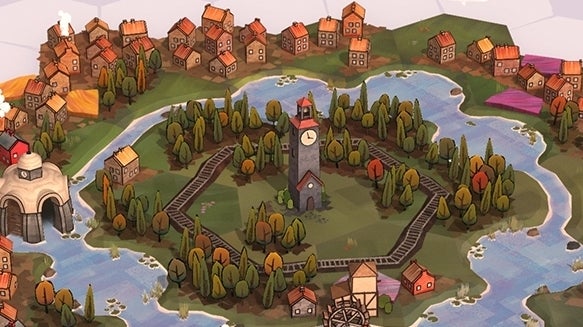Dorfromantik is a journey. Even 45 hours later (a shared tally because I’m not the only one in my household besotted with it) I still discover new things about it, about how it really works. And I would never have known it to look at it. To see it for the first time is to see a game so absurdly simple, and gentle, it seems strange it has scores at all. A game about placing hexagonal tiles with little houses and trees and fields on, and creating a miniature rural idyll. But make no mistake, those scores matter, and behind that beguiling simplicity is a surprisingly challenging puzzle game.
Dorfromantik reviewPublisher: Toukana InteractiveDeveloper: Toukana InteractivePlatform: Played on PCAvailability: Out in early access on Steam and GOG for £8
It works like this. You place tiles one at a time, rotating them and connecting them to other tiles, trying to match the things you see on them: rivers, trees, houses, rails and fields. And if you can match a certain number of them, specified by a kind of quest tile, you will get a green tick, a xylophonic “pling!” of success, and – most importantly – more tiles. Each tile you place, depending on how you place it, scores you more points, so the more tiles you have to place, the more points you will earn. Simple.
But it’s the subtleties of how best to do these things that will elude and compel you for hours to come: how to lay your houses, how to lay your rivers. Because inevitably, in every attempt, a time comes when you turn to your pile of tiles, full of hope, only to find they have miraculously diminished while you were looking elsewhere, and with a pang of dread, realise it’s game over: you don’t have the pieces you need to finish any more quests.
In that moment, though, a vital thing happens: you question everything about what you just did. You look again. You search frantically for any conceivable way you can keep going, or if you’ve already given up, think about how you can do things differently next time. This is what progress looks like in Dorfromantik. It’s uncovering wastage in your approach and realising your tiles could have been used better.
